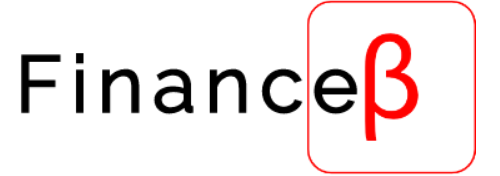Summary
VTHO acts as the facilitator in completing smart contract transactions in the VeChainThor blockchain, which uses it to cover computational gas costs.
In the VeChainThor blockchain, VTHO serves as an essential facilitator for executing smart contract transactions.
It acts as the fuel or computational gas that powers these transactions, covering the resource costs associated with processing and validating them.
By leveraging VTHO, the VeChainThor blockchain ensures the smooth and efficient execution of smart contracts, enhancing their reliability and scalability.
What Is VTHO Crypto? Definition of Vethor
Powering the VeChainThor public blockchain, Vethor (VTHO) serves as a crucial token facilitating gas fees and other transaction costs.
Launched in 2015 by Sunny Lu and rebranded in 2018, VeChainThor blockchain employs a dual-token system comprising VET, the native token, and Vethor (VTHO).
This system efficiently manages data on its Ethereum-based blockchain.
VET primarily functions as a store of value, often referred to as smart money.
On the other hand, VTHO plays a pivotal role in expediting processes and empowering smart contract transactions.
Notably, it acts as a unit of payment for the energy consumed, adhering to the VIP-180 standard.
When executing transactions involving data transfer on smart contracts via VeChain’s blockchain, Vethor (VTHO) tokens effectively complete the blocks on the chain.
VeChain blockchain platform finds its primary application in the logistics and supply chain management industry.
It plays a crucial role in ensuring compliance and accurately accounting for processes.
Understanding the VeChain Dual-token Economic Model
The dual-token system of VeChain, comprised of VET and VeThor (VTHO), plays a crucial role in maintaining the stability and effectiveness of its transaction costs.
Unlike many other blockchain networks, where transaction fees are directly influenced by the price of the native token, VeChain’s gas fees are not immediately affected by VET’s price fluctuations.
This is because VeThor (VTHO) is utilized to facilitate transactions on the VeChainThor blockchain.
To conduct VET transactions, users must possess VeThor (VTHO) to cover the associated fees.
This mechanism creates a direct relationship and co-dependency between the two tokens.
As a result, the more VET transactions are executed on the VeChainThor blockchain platform, the more VeThor (VTHO) is generated.
When VeThor (VTHO) tokens are used in payment processes, a significant portion, approximately 70%, is destroyed, effectively reducing the supply over time.
The remaining 30% is retained and distributed as rewards to authority node holders, incentivizing them to contribute to the network’s security and efficiency.
How to Purchase VeThor Token, VTHO
Both VET and VeThor (VTHO) tokens can be bought and traded on multiple cryptocurrency exchanges like Binance, Bitvavo, BitMart, Crypto.com, and Gate.io.
Additionally, top-level partners in the Vechain Foundation can purchase VET from a dedicated pool.
On the other hand, VET holders can passively generate a predefined amount of VeThor (VTHO) each day.
Currently, 1 VET generates approximately 0.000432 VeThor (VTHO) per day.
The total supply of VeChain (VET) tokens is limited to approximately 87 billion tokens.
Consequently, the total supply of VeThor (VTHO) token generated daily is roughly 37 million.
Utilizing Proof of Authority (POA) on the VeChainThor Blockchain: A Closer Look at Transaction Validation
To maintain stability and ensure cost-effectiveness, a voting consensus is implemented within the VeChain ecosystem.
This consensus mechanism allows for dynamic adjustments to the platform’s parameters based on the prevailing conditions.
Specifically, the voting consensus can either modify the amount of VeThor (VTHO) needed to execute a transaction on the VeChainThor blockchain or alter the daily VTHO generation rate for VeChain (VET) holders.
The price of VTHO is directly influenced by the supply and demand dynamics of VET.
As the VeChain platform gains traction and the number of transactions increases, the supply of VeThor (VTHO) expands.
This expanded supply, coupled with the growing demand for VTHO as a transaction fee, drives up its price.
This dynamic relationship between VET and VTHO ensures the long-term viability and sustainability of the VeChain ecosystem.
Furthermore, VeChain’s unique dual-token system adds another layer of utility and value to the platform.
VET, the primary token, serves as a store of value and a medium of exchange, while VTHO, the secondary token, is used as the transaction fee on the VeChainThor Blockchain.
This distinction creates a compelling incentive for users to hold VET, as they will receive a steady stream of VTHO as a reward for their participation in the network.
By leveraging the modified PoA consensus algorithm, implementing a voting consensus, and utilizing a dual-token system, VeChain has created a robust and scalable blockchain platform that offers enhanced speed, efficiency, and cost-effectiveness.
These features position VeChain as a promising solution for various industries, including supply chain management, logistics, and healthcare.
Current Partners and Actual Users of VeChainThor Blockchain
Current partners and active users of the VeChainThor blockchain ecosystem can be categorized into three main groups:
Enterprise Partners: These include renowned companies and organizations that have adopted and integrated VeChainThor blockchain technology into their operations.
Notable names among this group are DNV GL, PwC, BMW Group, and LVMH.
Government and Public Sector: Governments and public institutions have also recognized the potential of VeChainThor blockchain, partnering with the platform to enhance transparency, traceability, and efficiency in various sectors.
Examples include the Chinese government’s use of VeChainThor for food safety and traceability, as well as the Italian government’s adoption of the blockchain for supply chain management.
Consumer Applications: VeChainThor blockchain is actively used by consumer-oriented applications, enabling secure and transparent interactions.
Some popular examples include the VeChain mobile wallet for storing and managing crypto assets, and the VeChainThor-powered traceability platform used by Walmart China for tracking the origins and authenticity of products.
Addressing Real-World Concerns: VeChain’s Approach
Food Sector Inefficiencies: Walmart China, in collaboration with VeChain and PwC, implemented a groundbreaking traceability platform utilizing blockchain technology to store information on various product lines.
This platform empowers customers to effortlessly access and verify information about different items by simply scanning a QR code on the product.
By leveraging the transparency and immutability of blockchain, VeChain effectively addresses the challenges of food sector inefficiencies and enhances customer trust in the authenticity and traceability of products.
Counterfeiting: The renowned luxury conglomerate, LVMH, has embraced VeChain’s blockchain solution to authenticate its exclusive limited-edition collections.
By incorporating blockchain technology, LVMH can provide customers with a secure and verifiable means to confirm the authenticity of their luxury products.
This initiative combats the prevalent issue of counterfeiting, safeguarding both the brand’s reputation and the consumers’ investments.
Odometer Tampering: BMW Group has taken a bold step to combat odometer manipulation and fraud in the second-hand vehicle market through the creation of a digital vehicle passport.
Powered by VeChain’s blockchain platform, this passport allows cars to efficiently track their mileage, providing a transparent and tamper-proof record of a vehicle’s history.
By leveraging blockchain technology, BMW Group enhances customer trust, promotes fair market practices, and safeguards consumers from potential fraudulent activities.
Customer Assurance Concerns: In the wine industry, renowned winemakers Ricci Curbastro, Ruffino, and Torrevento have pioneered the implementation of “My Story,” a digital assurance blockchain solution developed by VeChain.
“My Story” enables these winemakers to validate the key components of their wine throughout the entire supply chain, from the vineyards to the consumers’ hands.
By leveraging blockchain’s immutable and transparent nature, customers can have absolute confidence in the authenticity, quality, and provenance of their wine, fostering trust and loyalty among consumers.
These innovative applications of VeChain’s blockchain technology effectively address critical concerns in diverse industries, ranging from food traceability and anti-counterfeiting to odometer tampering prevention and customer assurance.
VeChain’s commitment to transparency, security, and efficiency empowers businesses to enhance trust, protect consumers, and drive positive change across multiple sectors.
Is VeThor (VTHO) a Wise Investment?
No one can say for sure whether VeThor is a good investment, but the overall performance of the cryptocurrency market has been positive so far this year.
The introduction of new ecosystems like DeFi and NFTs has also increased its popularity and interest.
VTHO plays a vital role in the VeChainThor ecosystem, working alongside its native token VET.
As more projects and companies adopt the ERC-20-based blockchain, the demand for VTHO may increase.
One of VeChainThor’s advantages is its versatility across multiple industries and sectors, providing a significant degree of diversification.
Additionally, the platform’s authority master nodes system creates a more efficient and faster way of transacting on the blockchain, potentially attracting more users.
While this information can be helpful, it should only be used as a reference and not considered investment advice.
Investors should always conduct their own research and due diligence before investing in any financial instruments, as they are highly volatile and carry significant risks.
Key Takeaways and Conclusion
VeThor (VTHO) cryptocurrency is the native token of the VeChainThor public blockchain platform.
It serves as the fuel that powers transactions and covers gas fees and other related transaction costs on the network.
VTHO’s primary purpose is to facilitate processes and power smart contract transactions.
It acts as a unit of payment for the energy utilized in executing these transactions, making it a VIP-180 standard token.
This unique feature ensures that there is a sustainable economic model for the VeChainThor blockchain, where users pay for the resources they consume.
Both VeChain (VET) and VeThor (VTHO) tokens can be bought and sold on numerous cryptocurrency exchanges.
VET represents the value and ownership of the VeChainThor blockchain, while VTHO is used as the operational token for transactions and smart contract executions.
The adoption of VeChain and VeThor tokens has gained significant traction, with major blue-chip companies across various industries embracing their use.
Prominent names such as Walmart China, BMW, DNV GL, and LVMH have utilized VeChain’s technology to enhance their supply chain management, product authentication, and other business processes.
This widespread adoption highlights the potential of VeChain and VeThor in revolutionizing industries by providing transparent, efficient, and secure solutions.


